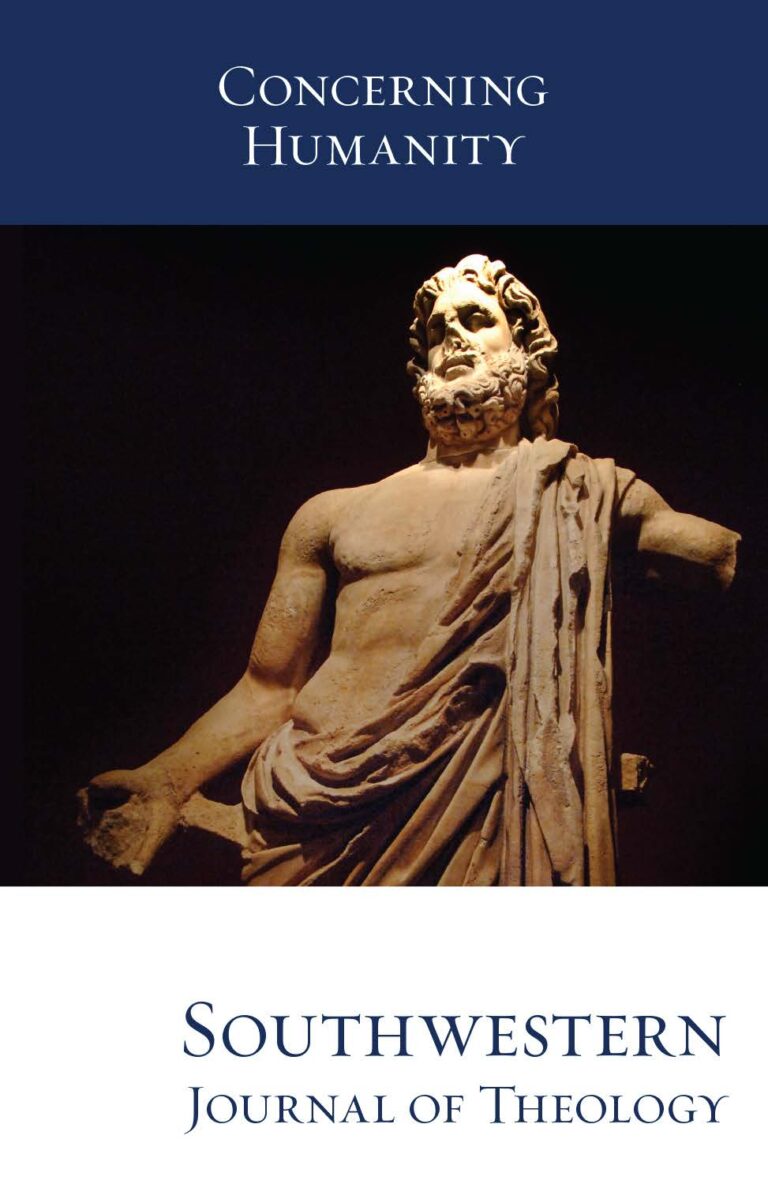
Concerning Humanity
Southwestern Journal of Theology
Volume 59, No. 1 – Fall 2016
Managing Editor: W. Madison Grace II
By James W. Sire. Downers Grove: IVP Academic, 2014. 176 pages. Paperback, $18.00.
If one has never seen God, then how can one properly believe that God is real? James Sire is a Christian author and apologist who argues that everything that exists is an argument for the existence of God as understood in biblical faith. He proposes the proof of God’s existence is embodied both in God’s revealed Word and within the created World. One way to transcend the limits of autonomous human reason, Sire argues, is to connect to the reality of God through literature which he views as distinct “signals of transcendence.” This signal of transcendence provides an eclectic “apologetic beyond reason.” Sire’s objective is for readers to understand one’s direct perception of the world, particularly as it is articulated in the worldviews espoused by authors who produce great literature. Such understanding allows one to intuit convictions about what is reality.
Sire states that adumbrations of God as Creator and the reality of Christ’s presence can be detected in daily life. These foreshadows provide not only a rational apologetic, but one that is emotional and takes hold of both the heart and the head leading to a commitment to follow Jesus Christ as Lord and Savior. Sire’s apologetic approach is to make an argument for Jesus Christ from literary theory, an approach that is not necessarily dependent upon Descartes-styled rationalism, but can come via intuition. Sire offers this approach because literature projects a specific worldview when it tells a story and this worldview provides a meta-narrative. This meta-narrative brings one into another world and allows the reader to see, feel, and experience the power and significance of the story.
Stanislaw Lem’s science-fiction work, The Cyberaid (1965), contends against the cosmological argument and goes on to consider naturalism as the basis for truth. In Lem’s worldview, all ultimate views of reality are suspect. Lem’s readers are forced to conclude that naturalism cannot be the foundation for trusting our senses and reason because it is also suspect. Present neo-atheists, including such notables as Richard Dawkins, Christopher Hitchens, Sam Harris, and Daniel Dennett, believe they have the basis for making up their own mind and grasp that which lies outside of oneself by their own autonomous reason. Sire points out that such autonomous human reasoning is actually a dead end. It is spiritual blindness and a failure to grasp properly the truth of reality. In contrast, Christians have a proper grounding for reason because they maintain that it is rooted in the ontological reality of God. Taking the biblical argument that man is made in the image of God (Gen 1:27) and that we are His creatures, it is our interactions in the Creation that surrounds us that inform our belief. That is to say that the general revelation of God’s created cosmos provides evidence that points towards God (Rom 1:18–32). Sire maintains that the created surroundings humans find themselves in provide signals of transcendence that best explain how one came into and is sustained in existence.
Literature is a signal of transcendence that yields a window into a viewpoint, whereby the author has become a creator of a secondary world, a world of imagination and imitation. The reader allows himself to be transported into this secondary world and experience it. The worldview or system of reality in this secondary world is a representation of what the author believes to be the case about the primary world of reality.
Sire proceeds through a number of authors and provides a literary professor’s insight into what is going on in their secondary world. Gerald Manley Hopkins’ work God’s Grandeur reflects a Christian worldview that incorporated the themes of Creation, Fall, and Re–Creation. Virginia Woolf writes of a world without God in Jacob’s Room (1922), where a desire to escape the present world is reflected in despair and the emptiness of being and her characters in The Years (1937), reflect her own loneliness, an inner despondence that ultimately led her to suicide. The greatness of the music of Johann Sebastian Bach is viewed by Sire as a testimony to the truth of the Christian faith and an aesthetic Christian apologetic. The arts and human pain may also be a signal of transcendence as they produce inside the heart a way for God to shout to the soul through a still small voice.
Sire concludes that the best argument for God is the meta-narrative of God’s revelation to man through His Word (Scripture), Jesus Christ, and His ongoing presence. Jesus invites all people to come to Him and to know Him intimately and personally. Jesus is a transcendent signal to God. Jesus Christ is the Savior that mankind needs because He can forgive man of his sins while judging righteously. Jesus Christ makes human reason meaningful. The Bible is the ultimate work of literature because it is a giant beacon that points the way to God through faith and trust in Jesus Christ. The Bible is the literary work that provides mankind with the starting point for that which is real concerning God, creation, and humanity’s situation. Sire invites the reader to come and see Jesus, the one who makes all reality real.





